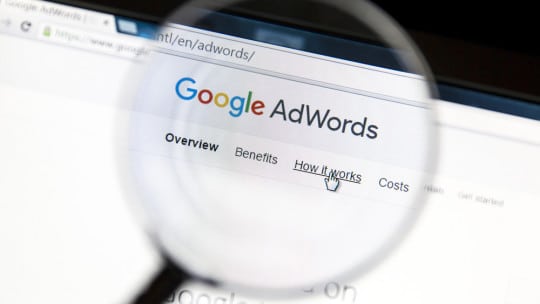

Pacific NW National Laboratory
Several years ago I found myself in an annual planning meeting. I was working for an emerging tech company. Our marketing team was lean and all of us met regularly: field marketing, performance marketing/advertising, web and PR. Everyone but me in PR received an increase in budget that year.
As the meeting progressed, I noticed my colleagues and I weren’t talking the same language. While I went over the number of press releases issued, media hits, social media growth, blah, blah, blah…they were talking about leads, clicks, cost-per-clicks (CPC), conversions, click-through rates and revenue. If I wanted more money, I needed to transform the way I showed my value and beat them at their own game.
I soon immersed myself in Google Analytics. As with many companies and organizations, our marketing revolved around our website: Drive people to it, get them to take some type of action, collect an email address if possible and work them through the sales funnel. If I could hitch my efforts to this process like field marketing or paid search did, I’d be able to show my value. Here’s what I learned:
The Acquisition Tab Is Where It’s At
Google Analytics offers all sorts of wonderful tidbits, which I encourage people to familiarize themselves with. You never know what you’ll find. The Acquisition tab/section, however, is my favorite. It’s here that you get a breakdown of where traffic is coming from and what visitors did.
Google automatically lumps traffic into several buckets, or what Google calls Channels. The Channels I typically pay attention to are:
• Organic Search: Traffic from search engines like Google and Bing.
• Paid Search: Clicks from ads on Google, assuming your company/organization runs them.
• Direct: The common interpretation of this is traffic that came directly to your site through someone typing your URL into his or her browser. The reality is this is traffic Google doesn’t know how to categorize. It certainly includes people going to their browser and typing in your site, but it also includes search traffic, clicks from shortened URLs and traffic from encrypted sites. If Google can’t “see” where the traffic came from (aka the referrer), it calls it Direct. If you’re using a URL shortener, you’ll definitely want to use UTM codes so your traffic doesn’t get lost in the void.
• Referral: This is the golden spot for PR. Referral traffic originates from some other site. Someone reads an article about your company and then comes to the site. You have to be a bit careful here because if you’re running ads on a publication that you also get media hits in, the traffic from the ads could show up here. UTM tracking codes can help mitigate this issue.
• Social: Traffic that comes from social networking sites like Facebook, Twitter, etc. Be careful here too. Sometimes traffic from social sites shows up in Referral. Be sure to check. And, like Referral, if you are running ads on social sites you’ll want to use UTM codes so you know which visits come from ads and which come from organic posts.
• Email: If you run email campaigns, generally this is where that traffic will show up. By looking at the different Channels you can see various trends and visitor behavior. For example, Paid Search may produce more traffic than Referral; however, you may notice Paid Search carries a higher bounce rate and lower session duration. That’s a quality-versus-quantity story you can tell that perhaps your marketing counterpart can’t. The goal here is to examine the traffic you produce and compare its performance to the other sources of traffic.
By clicking into each Channel you can examine traffic sources in more detail. For example, I once got a feature article placed in Fortune. Scrolling through Referral traffic in Google Analytics, I saw it generated 3,000 sessions to the website. Awesome, right? Yes, except not a single visit resulted in a lead for our business. Our customers clearly didn’t read Fortune.
UTM is Your Friend, But Don’t Go Crazy
To get the most out of Google Analytics you need to be able to use UTM codes. They are text you add to the end of URLs that Google Analytics uses to further categorize and measure traffic. A UTM code is divided into several parameters: Campaign Source, Campaign Medium, Campaign Name.
In Google Analytics, you can click on Source/Medium and see the traffic generated from the links you tacked your UTM code onto. If your marketing department already is using UTM codes, I suggest chatting with its members and mirroring how they set up their codes so you’re in alignment.
If you’re new to UTM codes, don’t worry, you can use Google’s URL Builder to generate them.
For me, I like to use two parameters: Source and Medium. When I first discovered UTM codes I thought it would be great to set up a code for each campaign/announcement I was doing. I envisioned being able to use the data to see which announcements, etc. were most effective. In the end, I realized it was too much data for me to manage.
Instead, I focused on three areas: press outreach, social media and blog, the three main outreach channels I oversaw. I created one UTM code for press outreach, one for social media, and one for the blog, like so:
•?utm_source=Communications&utm_medium=PressOutreach
•?utm_source=Communications&utm_medium=SocialMedia
•?utm_source=Communications&utm_medium=Blog
Anytime I included a link in a press release, I tacked the press outreach code on to the end of it. If I was promoting the same link via social media, I used my social media code. If a link back to our website appeared in a blog post, the blog code went on the end.
You can get more granular if you want, such as creating separate codes for each social media channel, which isn’t a bad idea if you’re trying to gauge whether Facebook performs better than Twitter. If you’re running ads on social media, I definitely recommend creating one for paid social media and one for organic social media, something like:
•?utm_source=Communications&utm_medium=SocialMediaPaid
•?utm_source=Communications&utm_medium=SocialMediaOrganic
Or, maybe:
•?utm_source=SocialMedia&utm_medium=Paid
•?utm_source=SocialMedia&utm_medium=Organic
For me, I realized at year’s end, I would be aggregating all the data by overall channel, so I skipped specific codes for each social account. All I wanted to say was something like, “The conversion rate of traffic from organic social media is XX% higher than the conversion rate of paid search.”
When I started using UTM codes I noticed things almost immediately. For example, we were considering dumping our wire service. It ran us more than $30,000 yearly. Not a single media inquiry ever came from it, and due to changes Google made to its algorithm, the SEO value of pumping out press releases had disappeared. What was the point?
Before pulling the plug on the wire service, though, I thought I’d toy with adding my UTM code in the press releases. When I analyzed the data, I noticed press releases actually were generating from 500 to 2,500 sessions, depending on the topic. Not only that, but it was high-quality traffic. The conversion rate was higher than what we got from other marketing efforts.
We typically spent about $500 per press release. If we received 1,000 hits from a press release that meant it cost us $0.50 per click. That’s a steal. Some of the keywords we were bidding on for search ads at the same time were upwards of $7 per click. We kept the wire service.
I walked into our next meeting with the cost-per-click (cost divided by number of clicks) and conversion rate (clicks divided by conversions) of traffic from press releases. In a matter of three months the conversation shifted from saving the company $30,000 per year by ditching our wire service to convincing the CMO that putting out a press release every week still wasn’t a good idea.
Conversion Events Are Key
As you likely know, conversion events are actions people take when visiting your site. Typically, the webmaster, marketing lead, or whoever owns the Google Analytics account sets these up. A conversion can be anything from purchasing a product to downloading a white paper, filling out a Contact Us form or just visiting a certain page on your site.
Savvy web and marketing teams will add values to conversion events. They’ll look at their business model, analyze their CRM data and determine that downloading a white paper, for example, is worth $100 in revenue or a customer service request generates on average $50 in revenue. Google Analytics calls this Goal Value. If you’re lucky enough to work at a company or organization that has this set up, then consider yourself lucky. If conversion events and Goal Values aren’t set up, well, I recommend doing so.
Even if values aren’t assigned to a conversion event, measuring and tracking conversions is paramount to demonstrating your contribution and showing your worth. Using your UTM codes you can click on the Source/Medium tab within the Acquisition section of Google Analytics. Here, you’ll see traffic sorted by the UTM parameters you set. If you set one as Communications/Blog, you’ll see the traffic from the blog to pages on your site and you can then see the number of conversions it generated under Goal Completions. Looking at how many sessions/visits the blog brought in divided by the number of conversions gives you the conversion rate.
In my experience, I found conversion rates from blogs can be several times higher than those from field marketing or ads. It’s better traffic. And why shouldn’t it be? Someone who’s on your blog is clearly already interested. Sending them to another page and converting them is a lot easier. While the volume of traffic may be significantly lower, the monetization of the traffic could be higher.
Conclusion
After about one year of honing my Google Analytics skills, it became apparent I was ruffling feathers. My CPC was low and my conversion rates were higher than those of my marketing counterparts. They weren’t thrilled and claimed their efforts contributed to my results. They wanted a piece of the PR pie, not that it was very big, mind you, but people are greedy.
To be “fair,” my boss informed me the traffic and revenue attributed to PR would be divided by four, 25% each to field marketing, paid search, ads and PR. We all were part of the same team and one discipline claiming sole responsibility for a sale or lead wasn’t accurate, as it likely took multiple interactions with our brand before someone became a customer. “Fair enough,” I said, “then give me a quarter of their traffic too. Who’s to say PR didn’t influence their results?” My budget increased that year.
CONTACT: [email protected]
Takeaways
1. The Acquisitions Tab is where the action is.
2. Become familiar with UTM codes; use Google’s URL Builder to generate them should they pose a problem for you.
3. Decide how much data you can manage.
4. Set up conversion events and Goal Values.
